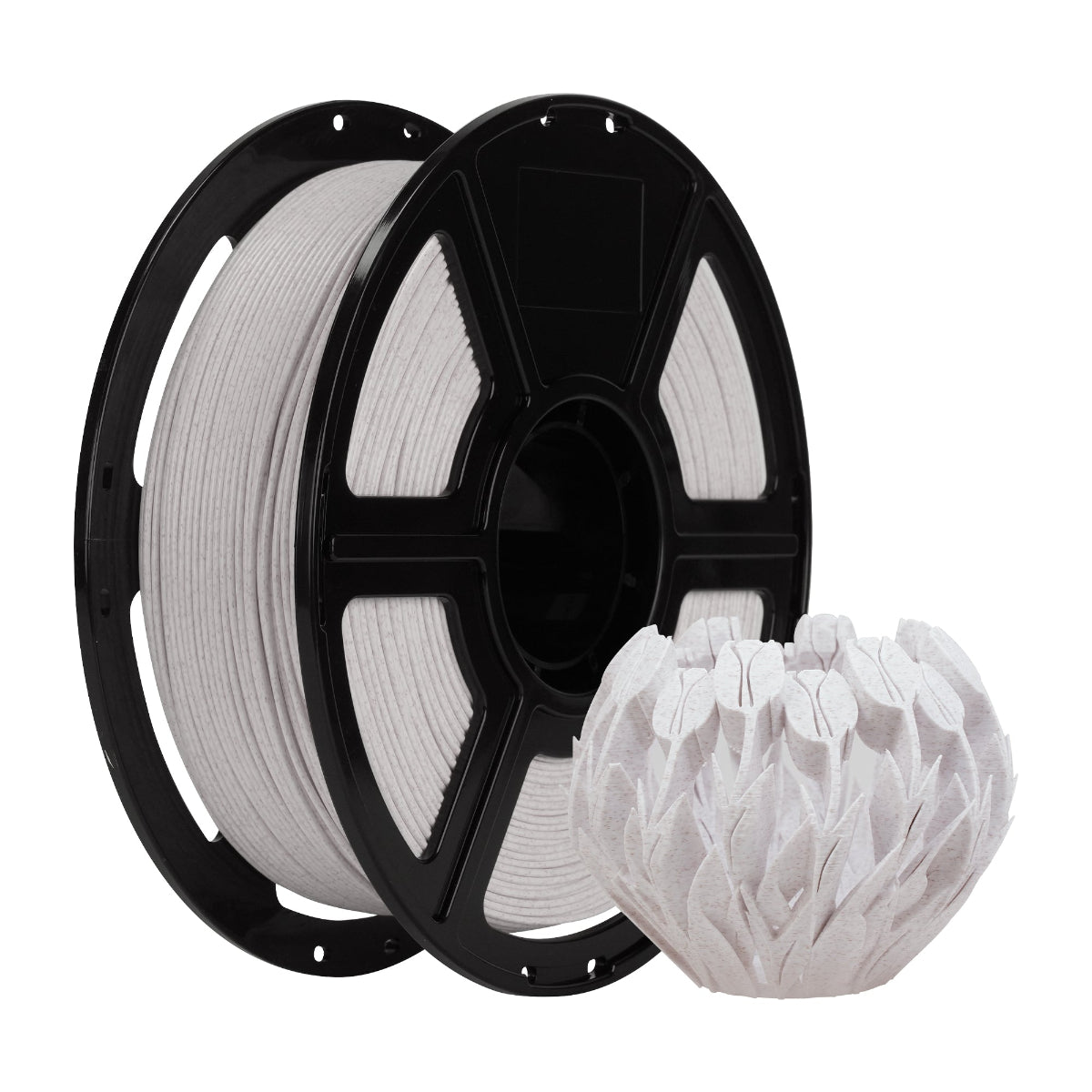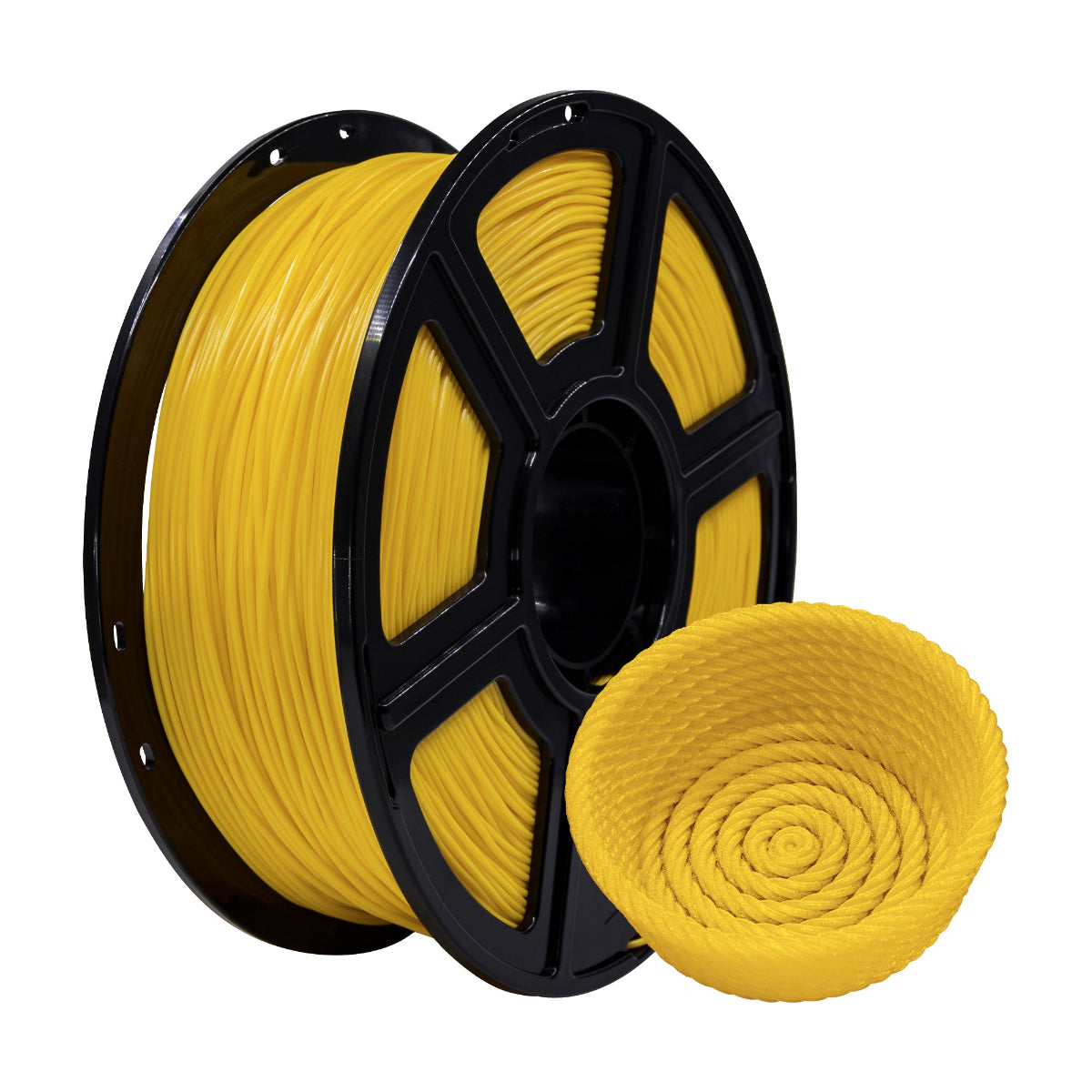In the rapidly evolving world of 3D printing, selecting the right slicing software is crucial for achieving high-quality prints and enhancing the overall printing experience. Two prominent slicers, Orca Slicer and Orca-Flashforge Slicer, cater to different needs while sharing a common foundation. This comprehensive guide explores the differences between these two slicers, helping you make an informed decision for your 3D printing projects.
Part 1: What is a Slicer in 3D Printing?
Before comparing Orca Slicer and Orca-Flashforge Slicer, it’s essential to understand what slicing software does and why it’s critical in the 3D printing process.
What is a Slicer?
A slicer is a software tool that converts 3D models into instructions (G-code) that 3D printers use to create objects layer by layer. This process, known as slicing, is the intermediate step between designing a 3D model and printing it. The quality, speed, and overall success of your 3D prints are significantly influenced by the slicing software you choose.
Slicing involves several critical steps:
- Model Importation:The slicer imports a 3D model, typically in formats such as STL, OBJ, or 3MF.
- Parameter Configuration:Users configure various printing parameters, including layer height, infill density, print speed, and temperature settings. These parameters determine the print’s quality, strength, and efficiency.
- G-code Generation:The slicer translates the configured parameters and the 3D model into G-code, which the printer uses to execute the print job.
The Evolution of Slicing Software
Understanding the lineage of slicing software helps appreciate the features and capabilities they offer today. The evolution of slicing software reflects advancements in 3D printing technology and user needs:
Slic3r: Created by Alessandro Ranellucci, Slic3r was among the first open-source slicers, introducing many innovations that have become industry standards. As an open-source project licensed under the GNU Affero General Public License (AGPL) version 3, Slic3r served as the foundation for future slicers.
PrusaSlicer: Developed by Prusa Research, PrusaSlicer expanded on Slic3r’s capabilities by adding advanced features and optimizations tailored to Prusa 3D printers. It introduced user-friendly features like preset profiles and advanced support generation.
Bambu Studio: BambuLab built on PrusaSlicer to develop Bambu Studio, incorporating additional enhancements and features such as cloud-based printing and advanced multi-material support.
Orca Slicer: SoftFever further evolved the software into Orca Slicer, a versatile slicer compatible with a wide range of 3D printers. Orca Slicer offers a rich feature set, strong community support, and frequent updates driven by user feedback.
Orca-Flashforge Slicer: Flashforge customized Orca Slicer to create Orca-Flashforge Slicer, specifically optimized for Flashforge’s printers, like Adventurer 5M series printers and Guider 3 Ultra printer. This version provides an enhanced, user-friendly experience with features tailored to Flashforge hardware.

Part 2: Shared Features of Orca Slicer and Orca-Flashforge Slicer
Given their common origin, Orca Slicer and Orca-Flashforge Slicer share several core features. Understanding these similarities provides a foundation for exploring their differences.
Key Shared Features:
Open-Source Foundation: Both slicers are licensed under the GNU Affero General Public License (AGPL) version 3, ensuring that any derivative work remains open-source and freely available. This fosters continuous innovation, community-driven improvements, and transparency in development.
User-Friendly Interface: Both slicers offer an intuitive interface that simplifies the slicing process, making it accessible to users of all experience levels. This is crucial for ensuring that both beginners and advanced users can effectively utilize the software without a steep learning curve.

Customization: Both slicers allow for extensive parameter control, which is particularly beneficial for users who want to fine-tune settings like layer height, print speed, and infill density to achieve optimal print results. Each slicer offers both basic and advanced modes for setting slicing parameters, allowing users to adjust settings according to their experience and specific needs. For example, when printing models with overhangs, users can reduce the printing speed for overhanging parts to improve print quality.
Cross-Platform Compatibility: Both slicers are compatible with multiple operating systems, including Windows, macOS, and Linux, ensuring broad accessibility for users regardless of their preferred platform.
Part 3: Unique Features of Orca Slicer
Orca Slicer is renowned for its versatility and broad compatibility, making it an ideal choice for users with varied 3D printing needs.
Key Features of Orca Slicer:
Multi-Printer Compatibility: Orca Slicer supports a broad array of 3D printers, offering flexibility for users who work with different brands, such as Prusa, Bambu, Creality, and others. This makes it an excellent choice for those managing multiple printer models or experimenting with different brands.

Community Support and Regular Updates: Orca Slicer benefits from strong community support, with regular updates and improvements driven by user feedback. This ensures that the slicer remains up-to-date with the latest advancements in 3D printing technology, and users can rely on a wealth of shared knowledge and resources.
Material Compatibility: Orca Slicer is compatible with a wide range of materials, making it a versatile choice for various printing projects. Whether you are printing with standard materials like PLA and ABS or more specialized filaments like carbon fiber-infused or wood-fill, Orca Slicer provides the necessary settings and support.
Advanced Support Structures: Orca Slicer includes sophisticated support generation algorithms, which help reduce material usage and improve print quality. Users can customize support density, pattern, and placement, optimizing supports for complex geometries.
Integration with Cloud Services: Orca Slicer supports integration with cloud-based services, allowing users to manage print jobs remotely and access cloud-stored profiles and settings. This feature is particularly useful for users who manage multiple printers across different locations.
Part 4: Unique Features of Orca-Flashforge Slicer
Orca-Flashforge Slicer is specifically designed for Flashforge’s Adventurer 5M series, offering a tailored experience that enhances print quality and ease of use for Flashforge users.
Key Features of Orca-Flashforge Slicer:
Optimized for Flashforge Printers: The slicer is fine-tuned to ensure superior print quality and efficiency on Flashforge Adventurer 5M series machines. Additionally, Flashforge has recently updated the slicer to support the Guider 3 Ultra model, further expanding its utility. The pre-configured settings are specifically calibrated for Flashforge printers, minimizing the need for manual adjustments and ensuring reliable, high-quality prints.
Enhanced Connectivity: Orca-Flashforge Slicer offers seamless wireless printing and remote monitoring capabilities. This allows users to manage their print jobs from anywhere, providing greater flexibility and control over the printing process. Users can start, stop, and monitor prints remotely, ensuring that they stay informed about their print’s progress without being physically present.

Integrated FlashMaker App: The slicer works in tandem with the FlashMaker app, enabling users to manage their prints, monitor progress, and control multiple machines simultaneously. This integration provides a streamlined workflow for users who rely on Flashforge printers, enhancing productivity and simplifying the management of large-scale printing operations.
Simplified User Interface: While Orca Slicer offers extensive customization, Orca-Flashforge Slicer simplifies the interface for Flashforge users. This reduction in complexity is designed to make the slicing process more straightforward, especially for users who prefer a more streamlined experience without sacrificing print quality.
A Closer Look - Comparing Orca Slicer and Orca-Flashforge Slicer
|
Feature |
Orca Slicer |
Orca-Flashforge Slicer |
|
Printer Compatibility |
Supports various 3D printer brands |
Tailored for Flashforge Adventurer 5M series, also supports Guider 3 Ultra
|
|
User Interface
|
User-friendly for diverse 3D printers |
Simplified interface for Flashforge users |
|
Material Compatibility |
Supports various filament brands |
Only some brands of filaments are supported |
|
Community Support |
Strong, with regular updates |
Focused on Flashforge community and resources |
|
Connectivity
|
Supports various wireless and cloud options
|
Enhanced connectivity tailored for Flashforge printers
|
|
Special Feature |
/ |
FlashMaker app integration:Location-based group control, Remote one-click reprinting, Remote monitoring |
Part 5: Expanded Insights into Usage Scenarios
To further illustrate the differences, let’s consider how each slicer might perform in various usage scenarios:
Scenario 1: Multi-Brand 3D Printing Lab
A lab uses multiple 3D printers from different brands, including Prusa, Creality, and Flashforge. The operators need a slicer that can handle diverse printer models while offering advanced customization for experimental projects.
Recommended Slicer: Orca Slicer
- Why? Orca Slicer’s compatibility with various printer brands makes it the ideal choice. Its advanced customization options allow for precise control over printing parameters, which is essential for experimental projects that require specific settings.
Scenario 2: Flashforge-Centric 3D Printing Business
A business relies exclusively on Flashforge Adventurer 5M series printers for producing custom-designed parts. The team needs a reliable, easy-to-use slicer that integrates seamlessly with their Flashforge hardware and provides robust support for remote monitoring.
Recommended Slicer: Orca-Flashforge Slicer
- Why? Orca-Flashforge Slicer is optimized for Flashforge printers, ensuring superior print quality with minimal manual adjustments. The seamless integration with the FlashMaker app and enhanced connectivity features make it the perfect choice for a business focused on efficiency and reliability.
Scenario 3: Advanced Hobbyist with Multiple Filaments
An advanced hobbyist enjoys experimenting with different filaments, including exotic materials like carbon fiber-infused PLA, TPU, and wood-fill. They need a slicer that offers extensive material profiles and customization options.
Recommended Slicer: Orca Slicer
- Why? Orca Slicer’s broad material compatibility and advanced customization features make it ideal for a hobbyist who likes to experiment with different filaments. The ability to fine-tune settings for specific materials ensures high-quality prints, regardless of the filament type.
Scenario 4: Educational Environment
A school uses Flashforge printers for teaching students about 3D printing. The educators need a user-friendly slicer that simplifies the printing process and minimizes the learning curve for students.
Recommended Slicer: Orca-Flashforge Slicer
- Why? Orca-Flashforge Slicer’s simplified interface and pre-configured settings are perfect for an educational environment. It allows students to focus on learning the basics of 3D printing without being overwhelmed by complex settings, while still producing high-quality prints.
Part 6: Conclusion
Choosing between Orca Slicer and Orca-Flashforge Slicer depends on your specific 3D printing needs. Orca Slicer offers versatility and extensive customization, making it ideal for users with varied printer models and materials. On the other hand, Orca-Flashforge Slicer provides a streamlined, optimized experience for Flashforge users, especially those who value ease of use and integration with Flashforge’s ecosystem.
By understanding the unique features and capabilities of each slicer, you can make an informed decision that enhances your 3D printing experience, whether in a multi-brand lab, a Flashforge-centric business, or an educational setting.
































